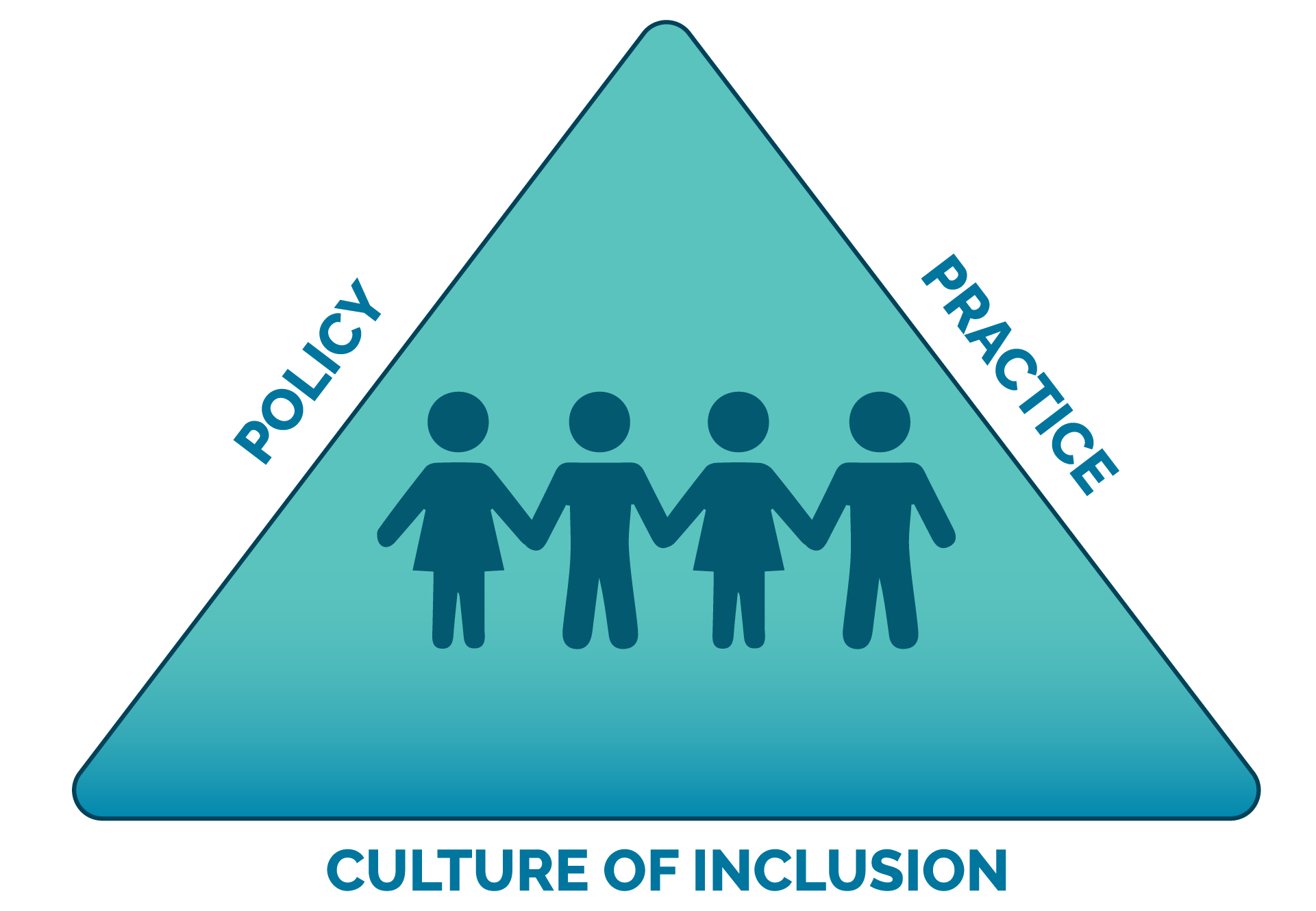What We Do
| Mission |  |
| Our mission is to provide unparalleled statewide technical assistance to educational communities in their pursuit of inclusive and equitable systems. Together we seek to empower each student to be purposeful and reflective, resourceful and authentic, and strategic and action-oriented within an environment of belonging, community and connection. |
|
Goals
|
 |
|
California State Performance Indicators Improve LEA's performance on state performance indicators 3, 5, 6, and 7.
Opportunities and Access Increase opportunities for students with disabilities to participate in general education LRE and show improvement in academic achievement |
Our Approach
Our Approach
Our Approach
We believe that achieving sustainable inclusion involves change in culture, policy, and practice of an organization that is driven by cohesive leadership teams. As such, we empower educational organizations by building their capacity for change through access to funds, professional development, and a network of support. Our logic model provides the general plan the SIP project follows in order to achieve desired outcomes, while the SIP Blueprint is intended as a change-management guide for our grantees to follow as they move on the path of change towards inclusion.
|
|

We are making news!
Read about SIP's impact across districts in The Special EDge Newsletter
|
|
Elements of Inclusion
Elements of Inclusion
Elements of Inclusion

SIP’s approach to inclusion is derived from Tony Booth and Mel Ainscow’s paper in 2002 titled ‘Index for Inclusion: Developing learning and participation in schools’ as well as other seminal works on managing sustainable change in educational organizations including Michael Fullan’s ‘Coherence: The right drivers in action for schools‘.
At SIP, we believe that a sustainable model of inclusion can be achieved when change is infused in the trifecta of policy, practice and culture of an educational organization by a cohesive leadership team.
- Policy: Attention to policy is essential as it helps remove structural and procedural barriers to enable support for inclusion.
- Practice: Practices that are responsive to student diversity, encourage student-directed learning, are evidence-based, and developed via ongoing collaboration between staff, students and community.
- Culture: This provides the foundational values and principles that promote a collaborating, accepting and stimulating community which guides decisions about policies and practices.
- Cohesive Leadership Team: Leadership is the catalyst for driving change and is responsible for setting a clear vision, communicating clarity and inspiring people to action.
|
|
